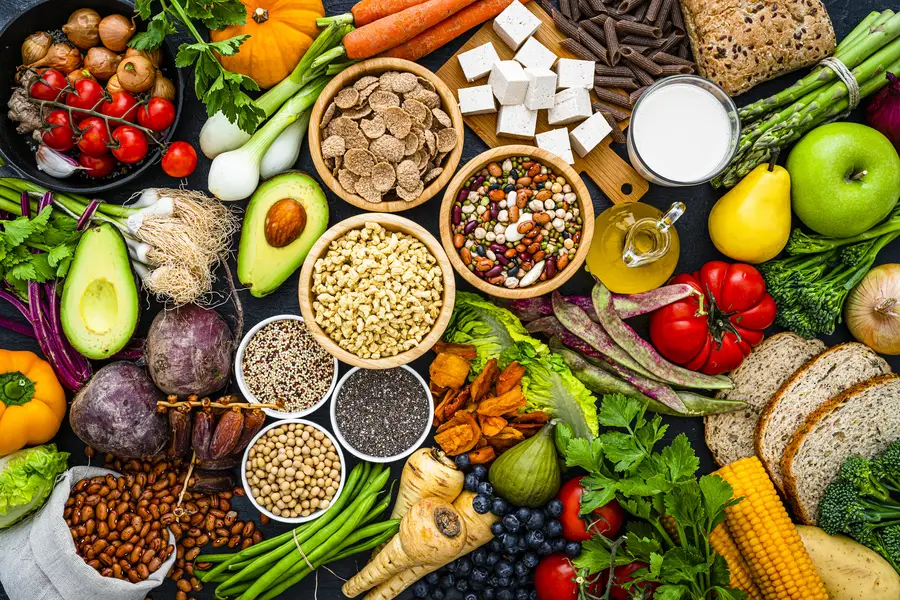
Food systems contribute to approximately one-third of global greenhouse gas (GHG) emissions. Disposing of lost or wasted food in landfills contributes to emissions by generating methane, a powerful pollutant that is extremely effective at trapping heat in the atmosphere. About 60% of the methane produced by landfills is associated with food waste, so reducing that source is key to cutting GHG emissions.
New satellite data indicate that we have been underestimating and underreporting the amount of methane entering the atmosphere from all sources, including some “super emitter” landfills in the United States and globally. Minimizing food waste during production, processing, and at the retail and consumer levels is key to reducing climate impacts and achieving global climate goals.
Targeted Interventions Required to Reduce Food Loss and Waste
In addition to its direct impact on global warming, food loss and waste (FLW) jeopardizes food security, which is further threatened by recent changes in climate patterns. Almost one-third of global food is lost or wasted, with the United States accounting for about 10% of that total. One in every four calories of food intended for consumers is lost—enough to feed 1 billion people annually. FLW is also an economic drain because the resources spent on production and processing are wasted, often triggering the need for expensive food imports. FLW accounts for about $1 trillion in lost revenue globally, with sub-Saharan Africa alone accounting for approximately $4 billion of that total annually.
Cutting FLW can help to reduce GHG emissions, biodiversity loss, water pollution and scarcity, projected deforestation, and the need for new food production while boosting economies and reducing hunger. To be effective, we must employ a range of interventions that reflect the diverse conditions and circumstances around the world.
Global Approaches to Reducing Food Loss and Waste
In low- and middle-income countries (LMIC), poor infrastructure, inadequate cold storage services, delays in reaching markets, and other factors are driving FLW at the farm, processing, and retail levels. Adding to the complexity are a host of food safety and nutritional issues in those regions. As the United States Agency for International Development (USAID) and Food and Agriculture Organization concur, if it isn’t safe, it isn’t food.
Some 600 million cases of foodborne illnesses are reported globally each year, resulting in 420,000 deaths. Most of the fatalities are children younger than age 5, who already suffer 70% of the world’s diarrheal deaths, many of which are due to unsafe food and water. Food illness contributes to economic losses too through reduced work productivity.
Therefore, successful interventions in LMIC include expanding access to clean water and better sanitation and hygiene services. RTI International has been leveraging our multidisciplinary expertise to reduce FLW by improving sanitation and cold storage at food retail and food service businesses in Ethiopia, where we are also engaged in a 5-year USAID project that aims to reach 825,000 people with new or enhanced access to water services.
The nutrition impacts of climate change will affect those least able to deal with them—particularly women and children—and worsen the inequities already present in developing countries. Reducing FLW can support healthy diets and reduce micronutrient deficiencies by expanding the availability and affordability of nutritious food in local markets. Ongoing efforts to improve agricultural yields in LMIC and the efficiency and profitability of their food value chains must be increased to expand the quantity and year-round availability of nutritious food where it is needed most.
RTI has been addressing the related challenges associated with food packaging and plastics in LMIC, such as the problems Puerto Rico encountered when it was forced to increase food imports after major hurricanes devastated its agricultural sector. The associated plastic packaging caused more litter, including plastic bags that clog storm drains and exacerbate flooding during heavy rains. As another example of our innovation in reducing ocean plastics, we are supporting a USAID project that is assisting a Sri Lankan business in developing edible ice cream cups, coffee lids, and spoons.
Targeting Food Loss and Waste in the United States
FLW is assuming new prominence in the United States, where the Environmental Protection Agency, Food and Drug Administration, and U.S. Department of Agriculture collaborated to devise a national strategy to slash domestic FLW 50% by 2030. Approximately one-third of FLW in the United States occurs in the post-harvest and food processing stages, with retailers and consumers accounting for the rest. The agencies are launching a national public education campaign that aims to encourage behavioral changes by advising consumers about the environmental impacts, including GHG emissions, caused by FLW and reminding them that FLW costs each U.S. household about $1,500 per year.
Other interventions include working with food companies and retailers to standardize use-by and best-by dates on product packaging by designing and testing new labels to help consumers safely prepare food and prevent foodborne illness, and reassessing marketing tactics that encourage over-purchasing that leads to waste, such as charging lower per-unit prices for food sold in large containers. Food service systems, which account for 50% of the meals eaten in the United States, are another impactful point of intervention, along with loaning farmers money to build cold storage units and awarding grants for food packaging innovations.
Shifting our Perspective on Food Waste to Reduce Emissions and Improve Food Security
The effectiveness of solutions to the FLW problem hinges on both a culture shift among consumers in the United States and other wealthy nations and systemic changes across industries. Although it is promising to see an increase in initiatives addressing waste at a broader scale, we must change the way we think about buying, storing, and using food in our daily lives. For example, innovations in composting, the rise of compostable packaging, and commitments by food and beverage companies to minimize FLW signal a growing recognition of the issue and steps toward sustainable solutions.
Unlike earlier generations that experienced wartime rationing and prioritized full food use, the relative abundance and affordability of food in recent decades have contributed to a more permissive attitude toward waste. However, recent innovations in waste reduction and industry-wide commitments are gaining traction, providing a promising complement to consumer-driven habits and creating a shared path to reducing food waste.
As we confront the growing impacts of extreme weather and global food inequities, it is essential to embrace more intentional habits and prioritize making the most of the food we produce.
To learn more, watch the “Climate Changes: Food Loss and Waste” webinar recording and explore our work in Food Loss & Waste Research and Communication Research.


